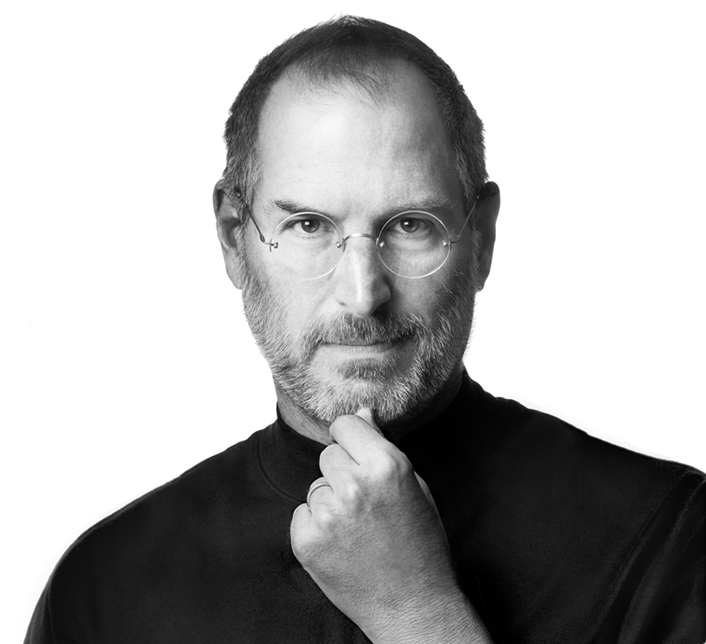
26th October, 2011
Misfit, mis-fit“One who is unable to adjust to one’s environment or circumstances or is considered to be disturbingly different from others.” – The American Heritage dictionary.
Steven P. Jobs died on October 5th, 2011. He was by far a very different person from the norm. His contributions to the tech world through his companies Apple and Next and the world of animation though his other company Pixar have had a direct impact on our lives, business or personal. In a way we are all misfits as well, being individual and thinking different is key to what separates us from other animals. If you are a Mac loyalist and fanatic you should be sad. If you are a Windows fan, you should be sad too. Why?
Steve Jobs was an innovator and a “re-innovator” who created and re-imagined great consumer products for the everyday person. As a Mac fan you have used his products and your world was probably better because of it. As a Windows fan you may have loathed his products or Apple’s philosophy or business approach, but having his products in the world made Windows and Android and all the other players want to do it better and cheaper.
That is what true innovation is about – making things easier and better. Steve in a 2005 Stanford commencement address said:
“Death is very likely the single best invention of Life. It is Life’s change agent. It clears out the old to make way for the new.”
This is somewhat jarring if not true observation of all products, business and living. Products, companies and people have to “die” if not physically at least metaphorically in terms of influence, importance and relevance in order to make way for the new. In fact the very creation of the new usually ushers in the “death” of the old.
So what does this mean for business? What does this mean for ideas? Is it all doomed to ultimately fail someday? Unlike a human being (unless you believe in reincarnation), companies, products can aspire to immortality and “cheat” death by reinventing themselves and keeping themselves fresh and relevant.
Steve Job and Apple are a fantastic example of how to get knocked down, relook and reinvent yourself and “come again”. Two recent glaring examples of failing to innovate are Borders and Kodak.
Borders was a successful seller of physical books from the 1970’s to 2006. After 2006, profits started to decline as people switched to digital. Borders suffered the fate of not being able to reinvent itself as an online and digital provider of books and reading material. They innovated too late and did not find a suitable strategy to link digital and physical. Therefore their retail stores and late attempt at an online store were shuttered in September of this year.
Kodak similarly has found that they have waited to late to innovate. Instead of being on the leading edge of storage media and digital cameras, they instead now find their stock value plummeting to almost delisting levels and their once strong physical film business extinct.
Apple by contrast, came back from the brink of bankruptcy in 1996 under Jobs’ return to the helm after he was ousted in 1985. He made hard decisions but cutting heavily invested projects and products that were non-core or did not meet the muster for potential consumer impact. he cut the number of projects from 50 to 10 and simplified the product line from 20+ products to just four products; a consumer desktop, a consumer notebook, a pro desktop and a pro notebook. In this way he was able to bring the human, physical and financial resources to focus on creating the next “best thing”.
A well know example is the elevation of Apple’s current Senior VP of Design Jonathan Ive from a secluded almost forgotten room to his own state of the art facilities. Ive caught Jobs’ eye during a tour of the compound with his innovative design ideas and prototypes. Jobs recongised that for Apple, great and comfortable design would be just as important as great software and functionality. Marrying these two areas made for ease of consumer acceptance and greater willingness by the average consumer to pay a premium for ease of use and comfort.
Companies and individuals must always be looking out the the new, the thing on the horizon that can make or break their value and usefulness.
That one more thing…
I’ll leave you with a last quote, text from Apple’s think different commercial, that was said to have been heavily influenced, by Steve Jobs:
“Here’s to the crazy ones. The misfits. The rebels. The troublemakers. The round pegs in the square holes. The ones who see things differently. They’re not fond of rules. And they have no respect for the status quo. You can quote them, disagree with them, glorify or vilify them. About the only thing you can’t do is ignore them. Because they change things. They push the human race forward. And while some may see them as the crazy ones, we see genius. Because the people who are crazy enough to think they can change the world, are the ones who do.”
Read more about Steve and his time at Apple from the unofficial blog:
IBD
